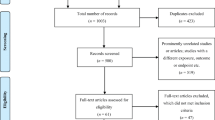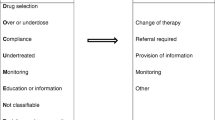Abstract
Background In 2009, China launched a new healthcare system, with reform of the primary healthcare system as its foundation and focus, to enable residents to access primary healthcare for simple health problems instead of seeking help at hospitals. Community pharmacies and pharmacists were to have increased responsibility in primary healthcare by delivering pharmaceutical care services in China in addition to their traditional roles of dispensing prescriptions and selling medicines. Aim of the Review To describe the current status of Chinese community pharmacy education and practice, and discuss future directions. Method A literature search was conducted using MEDLINE and International Pharmaceutical Abstracts. Additional articles were identified through the cross-referencing of articles and books. Additional data were found from relevant websites. Results From the 313 publications identified, 98 were included. China currently has 388,000 retail pharmacies, corresponding to one pharmacy per 3,532 population. All pharmacies provide prescription and over-the-counter products, as well as prescription dispensing and patient counselling. However, the lack of reimbursement mechanisms reduces the willingness of pharmacists to offer high-quality dispensing and counselling services. There is a shortage of qualified pharmacists to meet increasing patient needs. This, coupled with a shortage of pharmacist training, has resulted in pharmaceutical care being a low priority for delivery in routine pharmacy practice. To meet the increasing demand for pharmacists, 25 universities have been allowed to offer BS, MS and PhD degrees (3–7 years in length) in clinical pharmacy since 2008. The adoption of Good Pharmacy Practice as a recommended standard for community pharmacy practice provides pharmacists with a framework to aid them in service delivery. Conclusion A number of undertakings still require development, including the enactment of the Chinese Pharmacist Law, development of a standard for pharmaceutical care activities, development of the pharmacy workforce, increasing public awareness of pharmacists, and proper reimbursement for care provision. Although pharmaceutical care services are underdeveloped in China, they will become an integral part of the professional work of all pharmacists in the future, particularly in community pharmacy settings.

Similar content being viewed by others
References
Goel P, Ross-Degnan D, Berman P, Soumerai S. Retail pharmacies in developing countries: a behaviour and intervention framework. Soc Sci Med. 1996;42(8):1155–61.
Smith F. Community pharmacy in Ghana: enhancing the contribution to primary healthcare. Health Policy Plan. 2004;19(4):234–41.
Adepu R, Nagavi BG. Community pharmacy practice-a review. Indian J Pharm Educ. 2003;37(1):14–27.
Dugan BD. Enhancing community pharmacy through advanced pharmacy practice experiences. Am J Pharm Educ. 2006;70(1):1–4.
Alvarez-Risco A, van Mil JW. Pharmaceutical care in community pharmacies: practice and research in Peru. Ann Pharmacother. 2007;41(12):2032–7.
Beach M. Role of pharmacies in Chinese world of health care. Lancet. 1999;354(9177):493.
Yip W, Hsiao WC. The Chinese health system at a crossroads. Health Aff. 2008;27(2):460–8.
Chen Z. Launch of the health-care reform plan in China. Lancet. 2009;373:1322–4.
Liu Q, Wang B, Kong Y, Cheng KK. China’s primary health-care reform. Lancet. 2011;377(9783):2064–6.
Bhattacharyya O, Delu Y, Wong ST, Bowen C. Evolution of primary care in China 1997–2009. Health Policy. 2011;100(2–3):174–80.
National Bureau of Statistics of China. 2010 China’s sixth national population census data. 1st ed. Beijing: China Statistics Press; 2011. ISBN: 9787503762604.
World Bank. Toward a healthy and harmonious life in China: stemming the rising tide of non-communicable diseases. http://www.worldbank.org/content/dam/Worldbank/document/NCD_report_en.pdf. 2012. Accessed 18 Dec 2012.
Chen ZM. The development of higher pharmaceutical education in China’s reform. Am J Pharm Educ. 1998;62:72–5.
Xu J, Yang Y. Traditional Chinese medicine in the Chinese health care system. Health Policy. 2009;90(2–3):133–9.
Hesketh T, Zhu WX. Health in China. Traditional Chinese medicine: one country, two systems. BMJ. 1997;315:115–7.
The State Council. White paper: medical and health services in China. http://www.china.org.cn/chinese/2012-12/27/content_27526876.htm. 2013. Accessed 10 Feb 2013.
Wang HC, Chen LY, Lau AH. Pharmacy practice and education in the People’s Republic of China. Ann Pharmacother. 1993;27:1278–82.
China Nonprescription Medicine Association. Blue paper: the industrial development of Chinese nonprescription medicine. 1st ed. Beijing: Chemical Industry Press; 2011. ISBN: 9787122109101.
China Chemical Reporter. China to spend RMB850 BLN on health-care reforms in next three years. http://www.ccr.com.cn/online_about.aspx?id=22005. 2011. Accessed 11 Jun 2011.
Ministry of Health. The guideline on the construction of county hospitals, health centres, community health service centres, and village clinics.http://www.moh.gov.cn/publicfiles/business/htmlfiles/mohghcws/s3585/200906/41440.htm. 2012. Accessed 23 Sept 2012.
National development and reform commission. The guideline on the price of essential medicines. http://www.ndrc.gov.cn/shfz/yywstzgg/ygzc/t20091010_359837.htm. 2012. Accessed 23 Sept 2012.
Ministry of Health. The guideline on the reform of public hospitals. http://www.moh.gov.cn/publicfiles/business/htmlfiles/mohbgt/s3582/201002/46060.htm. 2012. Accessed 23 Sept 2012.
Wang GQ. China issues guideline to strengthen drug distribution. http://news.xinhuanet.com/english2010/china/2011-05/05/c_13860308.htm. 2012. Accessed 10 Jun 2012.
World Health Organization. WHO human resources for health. http://apps.who.int/gho/indicatorregistry/App_Main/view_indicator.aspx?iid=320. 2011. Accessed 14 Jun 2011.
Sun Q, Santoro MA, Meng Q, Liu C, Eggleston K. Pharmaceutical policy in China. Health Aff. 2008;27:1042–50.
National People’s Congress. Drug administration law of the People’s Republic of China. 1st ed. Beijing: Law Press China; 2001. ISBN: 7503633603.
The State Food and Drug Administration. Provisions for supervision of drug distribution. http://eng.sfda.gov.cn/WS03/CL0768/61650.html. 2012. Accessed 29 Jul 2012.
Wang W. Licensed pharmacists are seldom present in Beijing retail pharmacies. http://news.39.net/hygc/2012523/2032051.html. 2012. Accessed 29 Jul 2012.
State Council. National Drug Safety Program (2011–2015). http://www.prcgov.org/meet/meetings-content-77.html. 2012. Accessed 12 Mar 2012.
Ministry of Commerce. The “twelfth five” national plan for development of pharmaceutical distribution industry. http://henan.mofcom.gov.cn/aarticle/sjdixiansw/201106/20110607586364.html. 2011. Accessed 10 Jun 2011.
Christensen DB, Farris KB. Pharmaceutical care in community pharmacies: practice and research in the US. Ann Pharmacother. 2006;40(7):1400–6.
Jones EJ, Mackinnon NJ, Tsuyuki RT. Pharmaceutical care in community pharmacies: practice and research in Canada. Ann Pharmacother. 2005;39(9):1527–33.
Yamamura S, Yamamoto N, Oide S, Kitazawa S. Current state of community pharmacy in Japan: practice, research, and future opportunities or challenges. Ann Pharmacother. 2006;40(10):2008–14.
Shaanxi Licensed Pharmacist Association. The profile of shannxi licensed pharmacist. http://www.sxfda.gov.cn/CL0004/4735.html. 2011. Accessed 21 May 2011.
State Council. The regulations for implementation of the drug administration law of the People’s Republic of China. 1st ed. Beijing: China Legal Publishing House; 2002. ISBN: 780083136.
Fang Y, Chen WJ, Yang SM, Hou HJ, Jiang MH. Analysis of antibiotics sales without prescription in pharmacies in West China-taking Xi’an as an example. Chin Health Serv Manag. 2010;28(3):184–6.
Peng SX. Chinese pharmaceutical yearbook. 1st ed. Shanghai: The Second Military Medical University Press; 2012. ISBN: 978-7-5481-0375-2.
Qiao WZ. The education of traditional Chinese medicine in China. http://www.gfmer.ch/TMCAM/Hypertension/Education_Traditional_Chinese_Medicine_China.htm. 2012. Accessed 20 Mar 2012.
Graber DR, Bellack JP, Lancaster C, Musham C, Nappi J, O’Neil EH. Curriculum topics in pharmacy education: current and ideal emphasis. Am J Pharm Educ. 1999;63(2):145–51.
Kennie-Kaulbach N, Farrell B, Ward N, Johnston S, Gubbels A, Eguale T, et al. Pharmacist provision of primary health care: a modified Delphi validation of pharmacists’ competencies. BMC Fam Pract. 2012;13:27.
Bugnon O, Hugentobler-Hampaï D, Berger J, Schneider MP. New roles for community pharmacists in modern health care systems: a challenge for pharmacy education and research. Chimia (Aarau). 2012;66(5):304–7.
Peng SX. Chinese pharmaceutical yearbook. 1st ed. Beijing: Chinese Medical Science and Technology Press; 1999. ISBN: 7-5304-2558-7.
Ryan M, Shao H, Yang L, Nie XY, Zhai SD, Shi LW, et al. Clinical pharmacy education in China. Am J Pharm Educ. 2008;72(6):1–7.
Peng SX. Chinese pharmaceutical yearbook. 1st ed. Beijing: Chinese Medical Science and Technology Press; 2001. ISBN: 7-5304-2679-6.
Jiang JH, Liu Y, Wang YJ, Liu X, Yang MS, Zeng Y, et al. Clinical pharmacy education in China. Am J Pharm Educ. 2011;75(3):2–3.
China Pharmaceutical University. Clinical pharmacy program. http://school.cucas.edu.cn/HomePage/179/2010-01-22/Program_20348.shtml. 2012. Accessed 20 Mar 2012.
Huang SX. Licensed pharmacist system in China. Asian J Soc Pharm. 2007;2(2):41–4.
An FD, Yu BY. The status and prospects of the licensed pharmacist qualification system in China. Eur J Bus Manag. 2011;5:1–4.
State Council. White paper: status quo of drug supervision in China. 1st ed. Beijing: Foreign Languages Press; 2008. ISBN: 9787119052649.
Liu XY, Zhu Z. Reshaping the role of the pharmacist. Chin Pharm J. 2010;45(7):556–7.
Hu JH. Integrated pharmaceutical care. 1st ed. Shanghai: The Second Military Medical University Press; 2001. ISBN: 7810600214.
Editorial Board. Temporary regulations of pharmacy administration for medical institutions. Chin Hosp Pharm J. 2002;4:2–7.
Zhu M, Guo DH, Liu GY, Pei F, Wang B, Wang DX, et al. Exploration of clinical pharmacist management system and working model in China. Pharm World Sci. 2010;32(4):411–5.
Fang Y, Yang SM, Feng BL, Ni YF, Zhang KH. Pharmacists’ perception of pharmaceutical care in community pharmacy: a questionnaire survey in Northwest China. Health Soc Care Community. 2011;19(1):189–97.
Yao C. Practice and experience in integrated pharmaceutical care. The 4th Asian Conference on Clinical Pharmacy, Seoul, 24–26 July 2004.
China Nonprescription Medicine Association. Blue paper: the industrial development of Chinese nonprescription medicine. 1st ed. Beijing: Chemical Industry Press; 2011. ISBN: 9787122109101.
Ministry of Health. The fourth Chinese national health care survey results. 1st ed. Beijing: Peking Union Medical College Press; 2009. ISBN: 9787811362848.
Li YF, Rao KQ, Ren XW. Use of and factors associated with self-treatment in China. BMC Public Health. 2012;12:995.
International Pharmaceutical Federation (FIP). Good pharmacy practice. http://www.fip.org/good_pharmacy_practice. 2012. Accessed 12 Mar 2012.
Yang SM. Chinese pharmaceutical law and regulations. 1st ed. Beijing: Chemical Industry Press; 2005. ISBN: 7502566570.
Yang SM. Chinese pharmaceutical law and regulations. 2nd ed. Beijing: Chemical Industry Press; 2007. ISBN: 9787122011916.
The State Food and Drug Administration. Provisional regulations on licensed pharmacist qualification system. http://www.sfda.gov.cn/WS01/CL0001/. 2013. Accessed 10 Feb 2013.
Jiang JH, Liu Y, Deng P, Li QG. Bachelor’s degree programs in clinical pharmacy in China. Am J Pharm Educ. 2012;76(8):1–5.
Ministry of Health. The long-term medical and health personnel development plan (2011–2020). http://www.jkb.com.cn/document.jsp?docid=210519&cat=0I. 2011. Accessed 15 Jun 2011.
China Pharmaceutical Association. “Pharmacist on your side” campaign. http://www.cpa.org.cn/Index.html. 2012. Accessed 18 Aug 2012.
Acknowledgements
We thank Dr. Christine Leopold from Department of Health Economics, Gesundheit Österreich GmbH/Austrian Health Institute, and anonymous reviewers for their useful comments and language editing which have greatly improved the manuscript.
Funding
This work was supported by the Chinese National Natural Science Funds[Grant number 71103141/G0308], the Fundamental Research Funds for the Central Universities [Grant number 2011jdhz62], the Science and Technology Department of Shaanxi Province[Grant number 2010K16-02], and the China Medical Board Faculty Development Awards.
Conflicts of interest
None of the authors have any real or potential conflicts of interest concerning this work.
Author information
Authors and Affiliations
Corresponding authors
Rights and permissions
About this article
Cite this article
Fang, Y., Yang, S., Zhou, S. et al. Community pharmacy practice in China: past, present and future. Int J Clin Pharm 35, 520–528 (2013). https://doi.org/10.1007/s11096-013-9789-5
Received:
Accepted:
Published:
Issue Date:
DOI: https://doi.org/10.1007/s11096-013-9789-5




